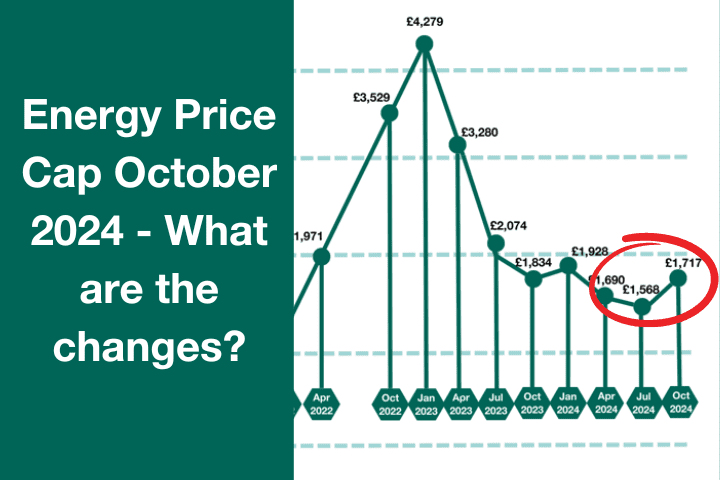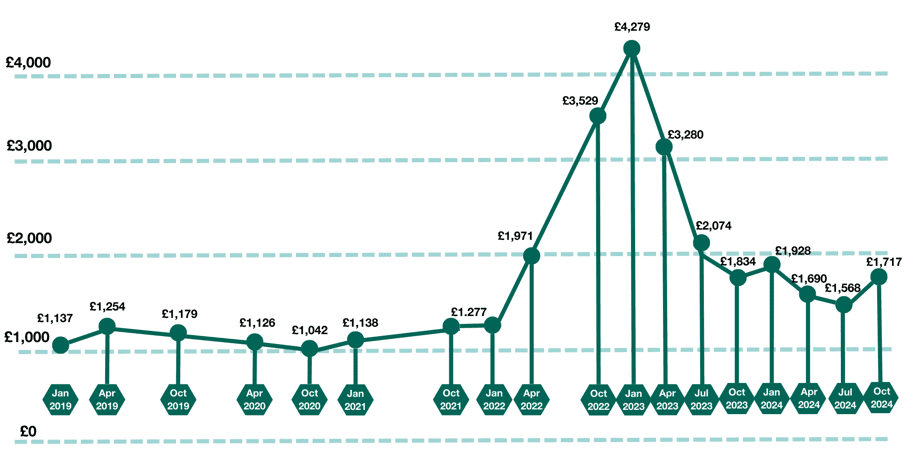Energy Price Cap October 2024: Crucial things to Know

The Energy Price Cap has changed again. Here are the crucial things you need to know.
At Green Building Renewables, we understand the impact energy prices have on your household, particularly as we head into the colder months. The energy price cap is designed to limit how much energy suppliers can charge for each unit of energy and the daily standing charge, ensuring you are not overcharged for your electricity and gas. This cap is reviewed every three months, with the next adjustment effective from today (October 1st) to December 31st, 2024.
Table of Contents
What is the Energy Price Cap?
The energy price cap is a regulatory measure designed to limit the maximum prices suppliers can charge you on standard variable tariffs. This mechanism protects you from excessive charges while ensuring a fair and competitive market.
With the new adjustments, some households may see a noticeable shift in their monthly energy bills. These changes reflect increased regulatory assessments and adjustments to accommodate fluctuating energy market dynamics such as wholesale prices and operational costs. Ultimately, the intent is to provide consumers with more predictable and fair pricing.
Understanding these changes and their impact is essential for individuals. They may prompt you to review your current energy tariffs and consider exploring fixed-rate plans or seeking out competitive energy deals. It’s also a valuable reminder for consumers to evaluate the energy efficiency of their homes and appliances, as optimising energy use can significantly curb costs irrespective of price cap adjustments.
Key Changes in the October 2024 Energy Price Cap
The new energy price cap brings several notable changes:
- Increased Cap Level: This October, the energy price cap will adjust upward due to rising wholesale energy costs. While this change aims to maintain a balance between the price suppliers can charge and the protection of consumers, it could lead to higher energy bills for many households.
- Shift in Tariff Structures: Some suppliers may alter their tariff structures in response to the new cap. Consumers should be vigilant about any changes to their current energy plans and consider switching to more competitive deals if available.
- Focus on Renewable Energy: The revised cap encourages providers to invest in renewable energy sources. This push aims to promote sustainability and reduce reliance on fossil fuels, aligning with broader environmental goals.
What’s Changed in the Energy Prices?
For the year’s final quarter, energy costs for a typical household using electricity and gas and paying by Direct Debit will rise to £1,717 annually. This represents a 10% increase, adding approximately £12 to the average monthly bill. Despite this increase, the new cap remains 6% (£117) lower than in 2023, when the price stood at £1,834. However, as our graph below shows, the energy price cap is still significantly higher than the price that existed in 2019 before the energy price crisis and COVID-19. The energy cost has not been reduced and is unlikely to ever return to the price lows seen before the energy crisis.

Are You Covered by the Energy Price Cap?
If you pay for your electricity and gas by standard credit (paying when you receive your bill), Direct Debit, prepayment meter, or have an Economy 7 (E7) meter, the energy price cap applies to you. However, the actual amount you pay will vary depending on your energy usage, location, and meter type.
Breakdown of Energy Price Cap Rates (October – December 2024)
Electricity Rates:
- Unit rate: On a standard variable tariff, you’ll pay an average of 24.50 pence per kilowatt hour (kWh) if you pay by Direct Debit.
- Standing charge: 60.99 pence per day.
Gas Rates:
- Unit rate: 6.24 pence per kilowatt hour (kWh) on average.
- Standing charge: 31.66 pence per day.
These rates apply across England, Scotland, and Wales, including VAT.
What’s Included in the Energy Price Cap?
The price cap is determined by various factors, including the wholesale cost of gas and electricity, network supply costs, and VAT. These are reflected in the unit rates and standing charges you see on your bill. To understand how household energy use influences your bill and how the cap is calculated, visit Ofgem’s Average Gas and Electricity Use Explained page.
Review of Standing Charges
Last year, Ofgem initiated a review of standing charges, which are included in the price cap and set by your energy supplier. These charges are incurred daily, even if you don’t use energy, covering costs such as maintaining the supply network and supporting government schemes like the Warm Home Discount.
Ofgem recently published its Options Paper on Domestic Standing Charges, exploring ways to reduce standing charges by between £20 and £100 annually. One proposed solution is shifting some fixed costs into the unit rate, rewarding energy-efficient households while protecting those who rely on consistent energy use, such as individuals using life-saving medical equipment or living in poorly insulated homes. Such initiatives aim to reward more efficient households, making the case for improving your home’s energy efficiency and performance even more robust.
Ofgem also called on energy suppliers to offer tariffs with no or lower standing charges, allowing consumers to choose plans that suit their energy consumption habits.
Continued Support for Prepayment Meter Users
Ofgem also extended the support offered to those with prepayment meters, ensuring that vulnerable customers facing financial difficulties can access additional support credit. This will help prevent energy disconnections during the winter months. The 12-month allowance for additional support has been extended by at least another six months.
What’s Next?
The next energy price cap review will cover the period from January 1st to March 31st, 2025. The new rates will be published by November 25th, 2024.
If you want to discuss your options for improving the energy performance of your home with technology like solar PV, heat pumps and battery storage. Then get in touch with your local team today.




